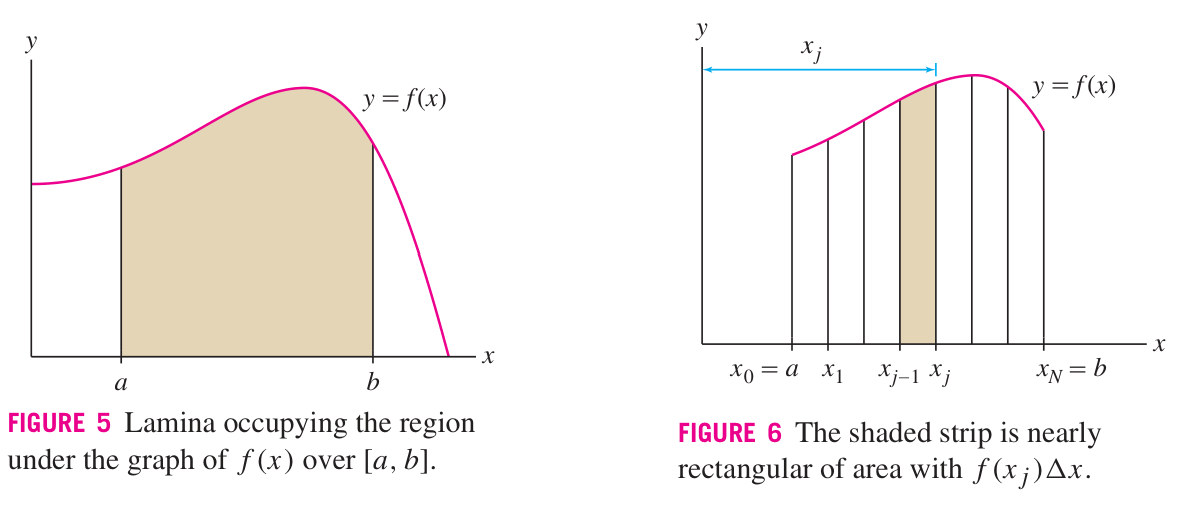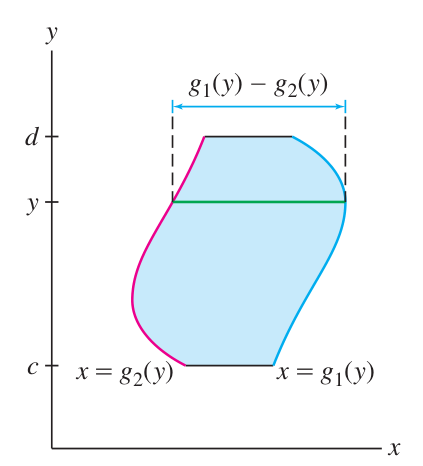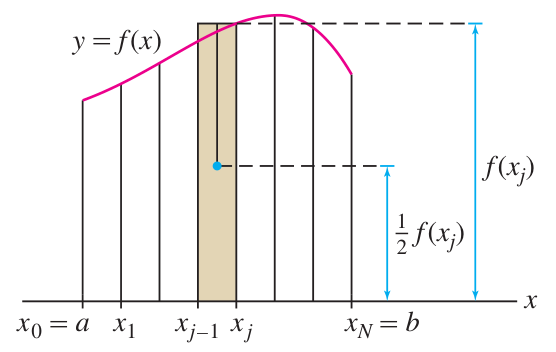Theory 1
Moment
The moment of a region to an axis is the total (integral) of mass times distance to that axis:
Moment to
: Moment to
:
Notice the swap in letters
integrand has factor integrand has factor
Notice the total mass
If you remove
or factors from the integrands, the integrals give total mass .
These formulas are obtained by slicing the region into rectangular strips that are parallel to the axis in question.
The area per strip is then:
— region under — region between and — region ‘under’ — region between and


The idea of moment is related to:
- Torque balance and angular inertia
- Center of mass
The center of mass (CoM) of a solid body is a single point with two important properties:
“average position” of the body - The average position determines an effective center of dynamics. For example, gravity acting on every bit of mass of a rigid body acts the same as a force on the CoM alone.
“balance point” of the body - The net torque (rotational force) about the CoM, generated by a force distributed over the body’s mass, equivalently a force on the CoM, is zero.
Centroid
When the body has uniform density, then the CoM is also called the centroid.
Center of mass from moments
Coordinates of the CoM:
Here
is the total mass of the body.
Center of mass from moments - explanation
Notice how these formulas work. The total mass is always
. The moment to (for example) is . Dividing these two values: where
. In other words, through the formula
, we find that is the average value of over the region with area .
Theory 2
A downside of the technique above is that to find
Midpoint of strips for opposite variables
When the region lies between
and , we can find with an -integral: When the region lies between
and , we can find with a -integral:
Region under a curve
For the region “under the curve”
, just set: For the region “under the curve”
, set:
The idea for these formulas is to treat each vertical strip as a point concentrated at the CoM of the vertical strip itself.

The height to this midpoint is
Midpoint of strips formula - full explanation
- If the strip is located at some
, with values from up to , then:
- The area of the strip is
. So the integral formula for can be recast:
- If the vertical strips are between
and , then the midpoints of the strips are given by the ‘average’ function:
- The height of each strip is
, so . - Putting this together:
Theory 3
Two useful techniques for calculating moments and (thereby) CoMs:
- Additivity principle
- Symmetry
Additivity says that you can add moments of parts of a region to get the total moment of the region (to a given axis).
A symmetry principle is that if a region is mirror symmetric across some line, then the CoM must lie on that line.